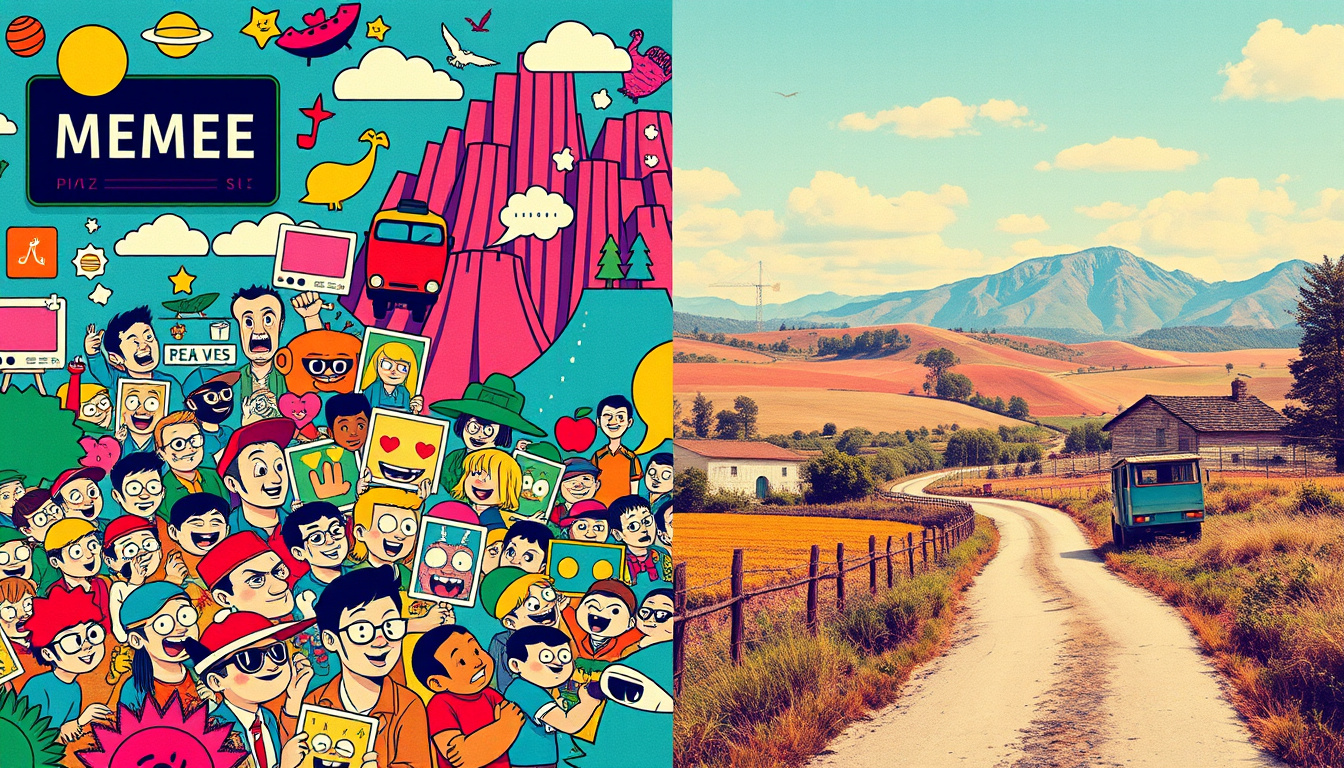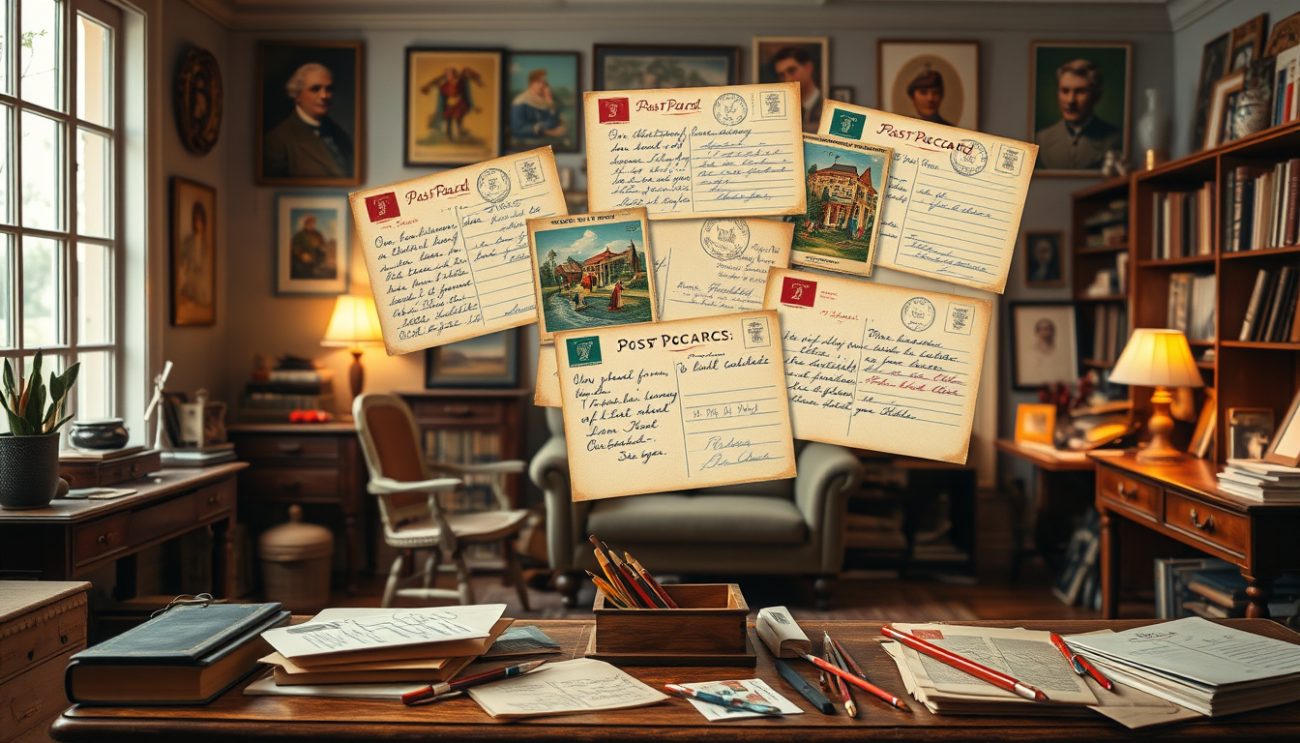In an age dominated by digital communication and instant gratification, it’s fascinating to explore how humor and cultural expression have evolved over time. Before memes took over our screens, postcards served as a cherished medium for sharing witty messages and playful imagery. Known as ‘The 100-Year-Old Meme: Postcards Before the Internet,’ this article delves into postcard culture, tracing its humorous roots and drawing parallels to today’s meme phenomenon. Join us as we uncover the unmistakable charm of bygone eras and examine how the legacy of postcards continues to influence our online interactions.

Key Takeaways
- Postcards served as an early form of meme culture, sharing humor and social commentary long before the internet.
- The evolution of humor in postcards reflects changing societal norms and communication styles over the decades.
- Postcards and memes are both tools for cultural expression, showcasing what resonates with the public at specific times.
- Despite the rise of digital communication, the legacy of postcards continues to influence how we share humor today.
- The enduring appeal of postcards lies in their ability to evoke nostalgia and foster connection through shared laughter.
Introduction to Postcard Culture
In an age dominated by instant messaging and social media, it’s easy to forget that a rich tradition of communication existed long before the internet. Enter the postcard—a seemingly quaint relic that, in many ways, embodies the 100-year-old meme: postcards before the internet. These simple rectangles of paper carry a profound cultural significance, acting as both a medium for communication and an art form. Originating in the late 19th century, postcards offered a unique way to share experiences, places, and sentiments with loved ones, making them a popular choice for travelers. They served not just to convey messages, but to showcase artworks, landmarks, and even local humor, creating a connection between sender and recipient that transcended geographical barriers. As we dive deeper into postcard culture, we’ll uncover the ways these little pieces of art paved the way for modern communication practices and explore their continued relevance in today’s digital world.
The Evolution of Humor in Postcards
The evolution of humor in postcards spans over a century, showcasing how societal norms and technological advancements have shaped comedic expression. Early postcards, primarily produced in the late 19th and early 20th centuries, often featured whimsical illustrations and witty captions, thus serving as the original ‘memes’ of their time. These 100-year-old memes, rich with satire and irony, reflect the cultural context of their era, using humor to convey messages ranging from political commentary to everyday life. Unlike today’s instantaneous digital memes shared across social media platforms, these postcards required a physical touch—sent through the postal service and often retained as treasured keepsakes. As we delve into the evolution of humor in postcards, we uncover not just a form of communication, but also a fascinating testament to how people have consistently turned to humor as a way to connect, share joy, and even critique society long before the advent of the internet.
‘Humor can be used as a device for communication, and that has been true long before the advent of the Internet; it connects us, regardless of the medium.’ – Anonymous

Comparing Memes and Postcards: A Cultural Analysis
In our modern digital age, it’s easy to forget that the practice of sharing witty, humorous images and messages predates the internet. The 100-year-old meme: postcards before the internet represents an intriguing facet of cultural exchange. Postcards served not just as means of communication, but as a canvas for art and satire, reflecting societal norms and humor of their time. Much like today’s memes, these postcards often conveyed sharp wit, cultural commentary, and social satire, capturing the essence of the era in which they were created. The evolution of memes from tangible postcards to digital images underscores a significant shift in how humor and creativity are shared across generations, highlighting the timelessness of satire as a means of connection in an increasingly interconnected world.
The Legacy of Postcards in the Digital Age
In today’s fast-paced digital age, the landscape of communication has transformed dramatically, yet one relic from the past remains an enduring symbol of connection and creativity: postcards. Often referred to as ‘The 100-Year-Old Meme: Postcards Before the Internet,’ these charming little pieces of art have been a staple of human correspondence for over a century. Postcards allowed people to share moments and memories from various corners of the globe long before social media made instant sharing possible. Each postcard features a unique blend of imagery and personal messages, making it more than just a souvenir—it was a way to narrate stories and emotions in a tangible format. Even in our digital era, postcards continue to evoke nostalgia, inspiring a resurgence in handmade and artisanal creations, thus bridging the gap between past and present. This legacy showcases not only the enduring appeal of physical mail but also highlights how postcards have adapted over the years, maintaining their relevance even as new communication technologies emerge.

Conclusion: The Timeless Appeal of Shared Laughter
In conclusion, the timeless appeal of shared laughter underscores the beauty of human connection, a sentiment that transcends generations. The 100-year-old meme, encapsulated in the delightful world of postcards before the internet, illustrates how humor has a unique ability to bring people together. Despite the rapid advancement of technology and the way we share content today, these vintage postcards remind us that the joy of a shared joke is as relevant now as it was a century ago. Whether through quirky illustrations or witty sayings, these collectible gems serve as a testament to our innate desire for connection and laughter, proving that good humor is truly timeless.
Frequently Asked Questions
What is the main topic of the article?
The article discusses the cultural significance of postcards, how they served as a form of humor and expression before the internet, and compares them to modern-day memes.
How did humor evolve in postcards?
Humor in postcards evolved through witty captions, illustrations, and themes that reflected societal norms and trends of their time, much like how memes adapt to current events and humor in contemporary culture.
What similarities exist between memes and postcards?
Both postcards and memes serve as tools for shared laughter and communication, often using visual elements and relatable humor to connect people, albeit in different historical and technological contexts.
What legacy do postcards hold in today’s digital age?
Postcards have left a lasting legacy as a nostalgic medium for communication and humor, influencing how we share visual content online and reminding us of the importance of personal touches in our digital interactions.
Why does the article emphasize the timeless appeal of shared laughter?
The article emphasizes that humor is a universal connector across cultures and generations, enduring through various mediums, including postcards and memes, fostering connections and shared experiences.
